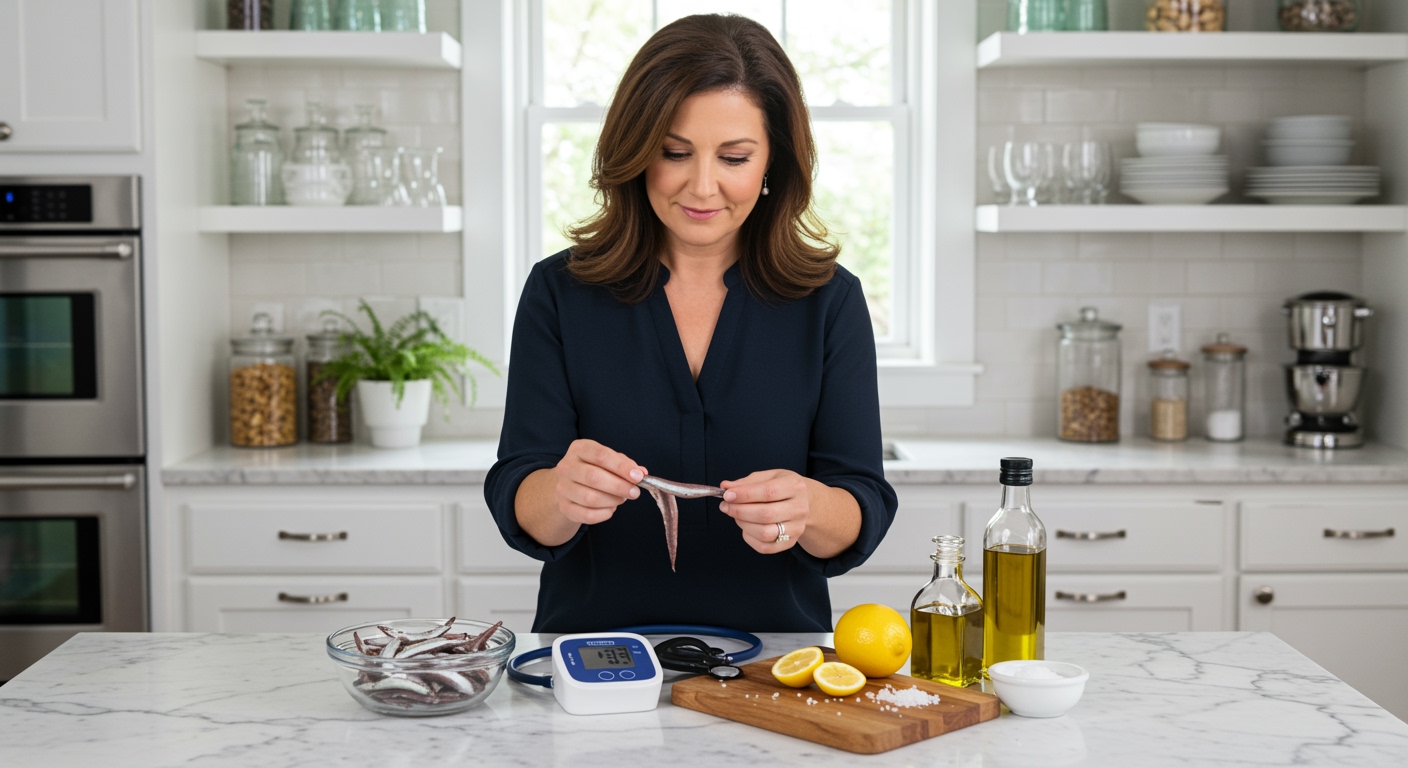✪ Key Takeaway: Frisee contains potassium and nitrates that may lower blood pressure, but effects are mild and unlikely to cause dangerous drops.
Introduction
You grab a bunch of frisee at the grocery store, thinking it will add some crunch to your salad.
Then you wonder if this curly, bitter green might affect your already low blood pressure readings.
Hi, I’m Abdur, your nutrition coach and today I’m going to explain exactly how frisee affects blood pressure levels and whether you should be concerned about eating it with hypotension.
What Makes Frisee Different From Other Leafy Greens?
Frisee belongs to the chicory family and delivers a distinctive bitter taste that sets it apart from mild lettuce varieties.
This curly endive contains higher levels of potassium compared to regular lettuce, with about 314 milligrams per 100 grams.
The bitter compounds in frisee come from sesquiterpene lactones, which give it that sharp flavor profile.
These same compounds may influence how your body processes sodium and maintains fluid balance.
Frisee also provides folate, vitamin K, and small amounts of nitrates that work differently than the high concentrations found in beets or spinach.
✪ Fact: Frisee contains about 40% more potassium than iceberg lettuce but 60% less than spinach.
How Does Potassium In Frisee Affect Blood Pressure?
Potassium works as a natural vasodilator by helping your blood vessels relax and widen.
When you eat potassium-rich foods like frisee, your kidneys respond by excreting more sodium through urine.
This sodium-potassium exchange helps reduce the volume of fluid in your bloodstream, which can lower blood pressure readings.
However, the potassium content in frisee is moderate compared to bananas or potatoes, so the effect remains relatively mild.
Your body also regulates blood pressure through multiple mechanisms, so one food rarely causes dramatic changes.
People with healthy kidneys typically handle normal dietary potassium without experiencing dangerous blood pressure drops.
✪ Pro Tip: Monitor your blood pressure for a few days after adding new foods to identify any patterns.
Can Nitrates In Frisee Lower Blood Pressure Too Much?
Frisee contains small amounts of natural nitrates that your body converts into nitric oxide.
Nitric oxide signals your blood vessels to relax and expand, which reduces the pressure needed to pump blood through your system.
The nitrate levels in frisee are significantly lower than those found in beets, spinach, or arugula.
Most people would need to eat large quantities of frisee daily to experience noticeable blood pressure changes from nitrates alone.
Your body also has built-in mechanisms to prevent excessive vasodilation from normal food intake.
The combination of fiber, water, and other nutrients in frisee creates a balanced effect rather than an isolated nitrate response.
✪ Note: Cooking reduces nitrate content, so raw frisee provides more nitrates than cooked versions.
Should You Avoid Frisee With Low Blood Pressure?
Most people with mild hypotension can safely include frisee in their regular diet without concern.
The blood pressure effects from eating normal portions of frisee are gradual and subtle, not sudden or dramatic.
Your body maintains blood pressure through complex systems involving your heart, kidneys, and nervous system that adapt to dietary changes.
However, people taking blood pressure medications should monitor their levels when adding new foods to their regular routine.
If you experience dizziness, fatigue, or other symptoms after eating frisee, consider reducing portion sizes or eating it with other foods.
The fiber and water content in frisee can also help you feel full, which might reduce your intake of sodium-rich foods that could help maintain blood pressure.
✪ Pro Tip: Pair frisee with protein and healthy fats to slow nutrient absorption and minimize blood pressure effects.
How Much Frisee Is Safe For Low Blood Pressure?
A typical serving of frisee ranges from one to two cups of chopped leaves, which provides manageable amounts of potassium and nitrates.
This portion delivers approximately 60-120 milligrams of potassium, which represents a small fraction of your daily needs.
People with low blood pressure can usually handle this amount without experiencing problematic drops in their readings.
Start with smaller portions if you are concerned, then gradually increase based on how your body responds over time.
Eating frisee as part of a balanced meal with protein, healthy fats, and complex carbohydrates helps moderate any blood pressure effects.
The key is consistency rather than avoiding frisee completely, as your body adapts better to regular dietary patterns.
✪ Fact: Two cups of frisee contain less potassium than half a medium banana.
The Bottom Line
Frisee contains potassium and nitrates that can mildly lower blood pressure, but the effects are generally too small to cause dangerous drops in people with hypotension.
Your body is smarter than any single food, and balance always wins over fear when it comes to making healthy dietary choices.
I would love to hear about your experiences with frisee and blood pressure management, so please share your thoughts or questions in the comments below.
References
At NutritionCrown, we use quality and credible sources to ensure our content is accurate and trustworthy. Below are the sources referenced in creating this article:
- PubMed: Dietary nitrates and cardiovascular health
- PMC: Potassium intake and blood pressure regulation
- WebMD: What Health Benefits Endive
- Cleveland Clinic: Foods to Lower Blood Pressure





